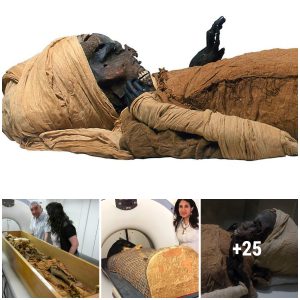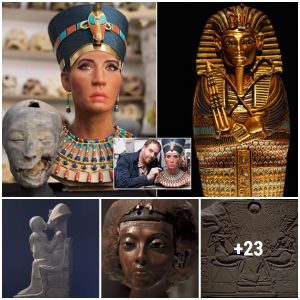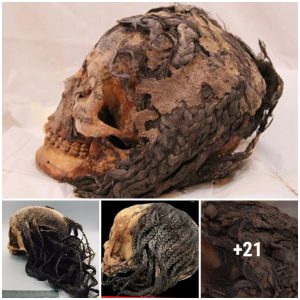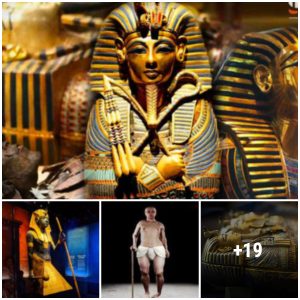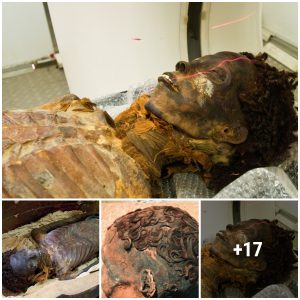An Andean mummy in Ecuador may be the missing link to understanding the expansion of rheumatoid polyarthritis from the Americas to Europe. Its naturally mummified remains are set to change both local and international history.

Rheumatoid polyarthritis is an autoimmune disease that most often affects hand and feet joints and may cause their deformity, destruction, and loss of function. This painful disease produces chronic inflammation of five or more joints at once.
El Comercio reports that during his first examination of the naturally mummified body, French scientist Philippe Charlier noted signs of rheumatoid polyarthritis in its deformed fingers and toes. The origins of this illness could be either genetic or infectious. “This mummy is extremely important for the history of illness” Charlier said .
Possibly the Oldest Case of Rheumatoid Polyarthritis
Charlier said “This is an illness with origins in Latin America and this may be the oldest case found to date of this illness.” The mummy may be “the missing link that will allow us to better understand the origin and natural history of this illness.”
Studies have shown that rheumatoid polyarthritis was prevalent in the American population at the time of the Spanish conquest, however it was extremely rare in Europe and Asia until later. It is believed that rheumatoid polyarthritis was brought back to Europe following the return of Spanish conquistadors.
“After confirming the presence of the illness, we will complete genetic analyses to discover the man’s origins, why the illness developed, and what other illnesses he had that may have induced the development of rheumatoid polyarthritis,” Charlier stated, and proposed, “This man may correspond to the moment when the two worlds [the Old and New worlds] met and exchanged germs.”
Who is the Mummy of Guano?

The mummy of Guano was found following an earthquake in the small town of Guano in Ecuador on August 5, 1949. It was discovered in a large jar amongst rubble after one of the walls fell in the old church of Asunción de Guano.
It is generally accepted that the body is of Fray Lázaro de Santofimia, a religious man sent from Spain to spread Catholicism around rural Ecuador. He gave indigenous people living around the town of Guano food and other aid and from 1565 to 1572 he was a guardian of the church the mummy was found in.
This had led to the belief that he may have been buried there so “his soul could roam around and always be there looking over” the local people.
The jar the mummy was placed in has disappeared and no one can say for certain why the man’s body was laid to rest there and covered in the white powder called cal. But when the mummy was discovered, it was wearing a scarf around its chin. Some believed it was just a tradition from the time and others said it was to keep its mouth closed. But many researchers have asserted the man died when he had a painful toothache.
Charlier has confirmed that there is a six-mm (0.24-inch) fistula on the left side of the chin which was created by pus flowing from a large abscess in the jaw, and he believes the infection caused the man’s death when it spread from his mouth to his skin, blood, and brain.

Although the stories of the lonely Franciscan with a rat as his only friend are unlikely to be true, the little mummified rodent found by the man’s body will also be examined to see if it bore any plagues.
Charlier will also try to ascertain if the mummy is that of the Spanish Franciscan. According to a report in El Telégrafo , he doubts the claim due to the clothing the mummy is wearing. He explained, “The clothing religious men wore, during colonial times, was thick, like jute, yet the mummy’s clothing has buttons and is made of a delicate fabric.”
Charlier was also pleasantly surprised by the mummy’s well-preserved state, he told El Ciudadano , “It doesn’t fall apart or disintegrate. There is no humidity or mold, its perfect.” So far, CT scans show that the mummy’s brain, heart, kidneys, prostate and part of its lungs have been preserved.
The mummy’s identity will be better understood following DNA and Carbon 14 testing, which will have their results in the next six months. Samples of the mummy’s hair will be analyzed and fiberoptic and toxicological testing are set to take place.
This will provide researchers with a better understanding of not only the mummified man, but also what life was like in the Andean province of Chimborazo during the 16th century.
The Dead are an Open Book with Much to Tell Us
Charlier is an expert in the analysis of ancient human remains and mummies. He has previously examined the remains of Adolf Hitler and Joan of Arc , and taken part in a facial reconstruction of Robespierre. For Charlier , “The dead are an open book to understanding the living and are ambassadors of history.”
He also explained, “The dead are as alive as we are, we are the future deceased; for me it’s a continuous chain. This isn’t morbid at all, I don’t work with the dead because death interests me, I work with the dead because they have much to tell us.”

